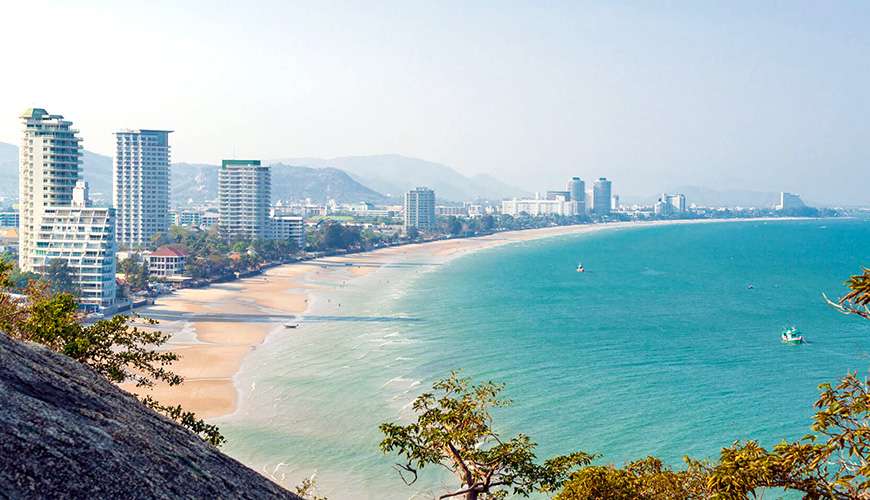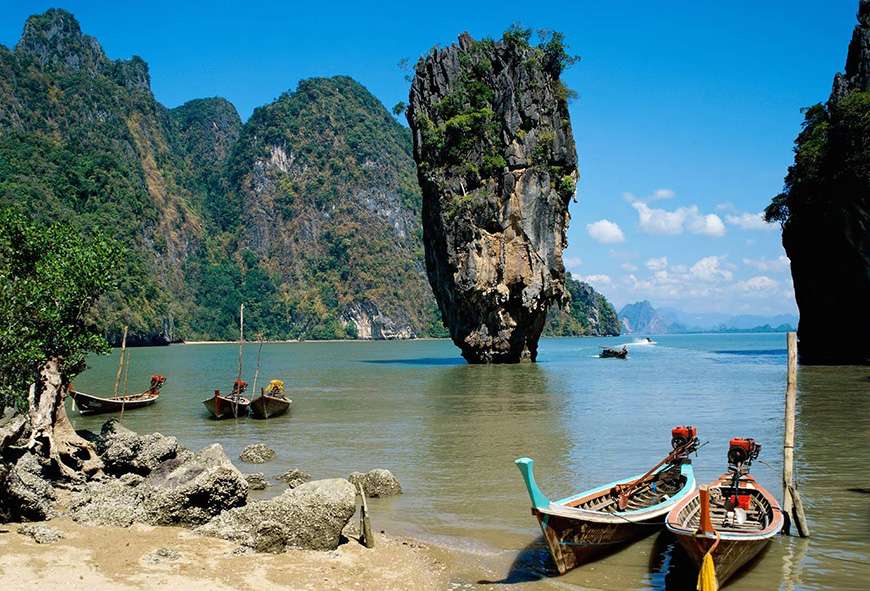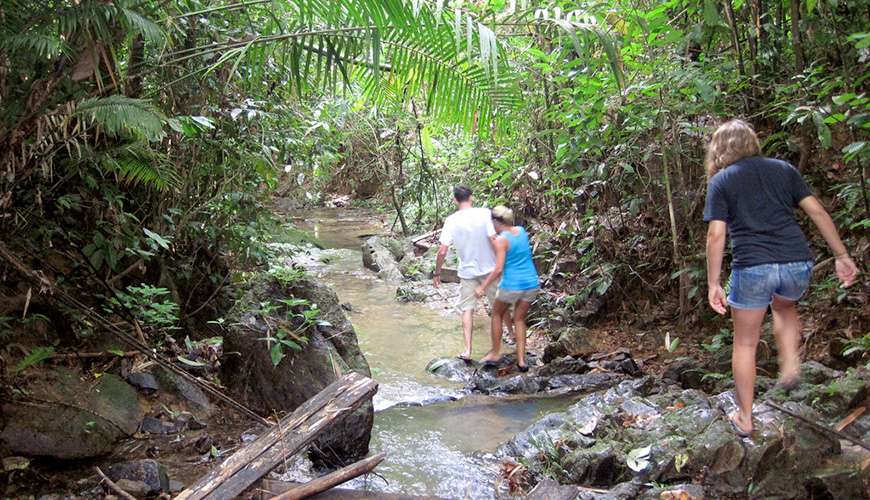Connected to Central Thailand by the Kra Isthmus,
Southern Thailand occupies the northern part of the Malay Peninsula. The region is bisected by the Sankalakhiri Range, with the east coast towards the Gulf of Thailand covered in river plains and the west coast facing the Andaman Sea and Straits of Malacca featuring steep cliffs.
The area is the last part of Modern Thailand to be incorporated into the Kingdom of Siam, and was indeed the last part to be populated by ethnic Thais. Traditionally belonging to various independent Malay states, the region has always been under heavy Indian influence, with traditional religions being Buddhism and Hinduism. The region finally came under Thai control with the emergence of the Sukhothai kingdom and the subsequent Ayutthaya kingdom. In modern times the extreme southeast has been the site of an ongoing insurgency among the Muslim Malay population, who are seeking increased autonomy from Bangkok.

The main beach of Phuket, Thailand’s southern metropolis.
The vast majority of the population belongs to the Southern Thai ethnicity, and the Southern Thai language is their native language. In the extreme southeast, in the states of Pattani, Yala and Narathiwat, Muslim Malays make up the majority.
In terms of temperature, the climate is stable all year round, ranging from the mid 20’s to low 30’s. However, the rains alternate between the two coasts, with the west coast rainy season occurring in summer, and the east coast rainy season in winter.
Starting in the north, not far from Bangkok, the resort town of Hua Hin is a popular destination for families or travellers looking for a luxurious and relaxing time at the beach.
Over on the west coast, Phuket is the main metropolis of the region. Once known as the “Pearl of the South”, the city has lost much of its appeal in recent decades. Many travellers avoid the city entirely due to its high prices, and we recommend it mainly as a stopping point before continuing south.

The southern islands are famous for their amazing landscapes and peaceful atmosphere.
Heading south from Phuket, you have the islands of Ko Phi Phi and Ko Lanta, as well as the charming coastal town of Krabi. Less touristic than their western equivalents, these locations are popular with backpackers hoping to escape the madness of Ko Pha Ngan. The islands are of course ringed in pearly beaches, while on the mainland, Krabi has emerged as one of the top rock-climbing destinations of South East Asia.
Of course, the most famous islands in Thailand are over on the east coast. Namely Ko Samui, Ko Pha Ngan and Ko Tao. Ko Samui is the largest of the three, and is fairly uninteresting unless you wish to stay in one of the many resorts lining the beaches. However, the sport of Muay Thai (Thai kickboxing) is particularly popular here, and for many it becomes a great place to stay at a Muay Thai school and learn the ancient art.
A short ferry from Samui will take you to Ko Pha Ngan, site of the famous (or perhaps infamous) full moon party. Every month, thousands upon thousands of travellers make their way to the small island for the party, and during the three days it’s held, the beach here is literally packed with people.
If the wild partying of Ko Pha Ngan isn’t for you, you might be more pleased with Ko Tao. The scuba capital of Southeast Asia, the island is relatively untouched compared to its bigger brothers, and it’s a great place to get your scuba license or rent a motorbike and explore the jungles of the interior.

The interior of the islands presents some great trekking opportunities.
Finally, the three southeastern states should generally be avoided, due to the insurgency there, but for brave travellers willing to take the risk, you’ll find a unique friendliness among the local Malay population that has eroded away in the rest of Thailand after decades of heavy tourism.
Due to its proximity and shared history with Malaysia, Southern Thailand shares many dishes with its southern neighbour. The millennia-long influence from India is also clear as day, with curries forming the backbone of Southern Thai cuisine. Standouts among these are the Massaman Curry, relatively mild by Thai standards and named the most delicious dish in the world by CNN in 2011, and Gaeng Som, a spicy and sour curry prepared with tamarind.
Beaches and islands will dominate your itinerary in Southern Thailand, and for good reason. Whether you want a quiet island to relax in a hammock, a wild weekend of partying or perhaps a month spent training and learning Muay Thai, there’s an island here for you.